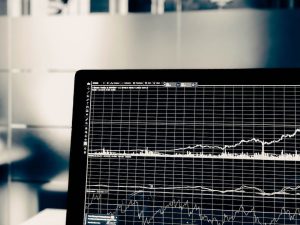Forex trading is the process of buying and selling currencies in the foreign exchange market. It has become increasingly popular in recent years, with many individuals and institutions looking to profit from the volatility of currency prices. If you are interested in learning how to trade forex, here are some basic steps to follow:
1. Learn the basics of forex trading
Forex trading involves buying one currency and selling another simultaneously. The exchange rate between two currencies is determined by supply and demand factors, such as economic growth, inflation, interest rates, and geopolitical events. To begin trading forex, you need to understand the terminology, market structure, and trading platforms. You can start by reading books, watching videos, and attending webinars on forex trading.
2. Choose a forex broker
A forex broker is a company that provides access to the foreign exchange market through trading platforms. You need to choose a reputable broker that is regulated by a financial authority and offers competitive spreads, leverage, and trading tools. You can compare different brokers based on their fees, customer support, and trading conditions. Some popular forex brokers include IG, Pepperstone, and CMC Markets.
3. Open a forex trading account
Once you have selected a forex broker, you need to open a trading account. This involves filling out an application form, providing personal information, and verifying your identity and residency. You can choose between a demo account, which allows you to practice trading with virtual money, or a live account, which enables you to trade with real money. You need to fund your trading account with a minimum deposit, which varies depending on the broker and account type.
4. Choose a trading strategy
Forex trading involves different styles and approaches, such as day trading, swing trading, and position trading. You need to choose a trading strategy that suits your personality, risk tolerance, and goals. A trading strategy should include entry and exit rules, risk management techniques, and performance evaluation criteria. You can develop your own strategy or use a pre-existing one. Some popular trading strategies include trend following, breakout trading, and scalping.
5. Analyze the market
Forex trading requires analyzing the market to identify trading opportunities. You need to use technical and fundamental analysis to understand the price action and underlying factors that affect currency prices. Technical analysis involves using charts, indicators, and patterns to identify trends, support and resistance levels, and momentum. Fundamental analysis involves analyzing economic data, news releases, and geopolitical events to assess the strength and outlook of different currencies.
6. Execute trades
Once you have analyzed the market and identified a trading opportunity, you need to execute a trade. This involves selecting the currency pair, specifying the trade size, setting the stop loss and take profit levels, and choosing the order type. You can place a market order, which executes at the current market price, or a pending order, which executes at a specified price level. You can also use different order types, such as limit orders, stop orders, and trailing stops.
7. Manage risk
Forex trading involves risk, and you need to manage it effectively to avoid losses. You need to use risk management techniques, such as stop loss orders, position sizing, and diversification. Stop loss orders allow you to limit your losses by automatically closing a trade when the price reaches a predetermined level. Position sizing involves determining the appropriate trade size based on your account balance and risk tolerance. Diversification involves spreading your trading across different currency pairs and markets to reduce the impact of volatility.
In conclusion, forex trading requires knowledge, skills, and discipline. You need to learn the basics, choose a broker, open an account, choose a strategy, analyze the market, execute trades, and manage risk. Forex trading can be profitable, but it also involves risks, and you should only trade with money you can afford to lose. Always remember to stay informed, stay disciplined, and stay focused on your goals.





